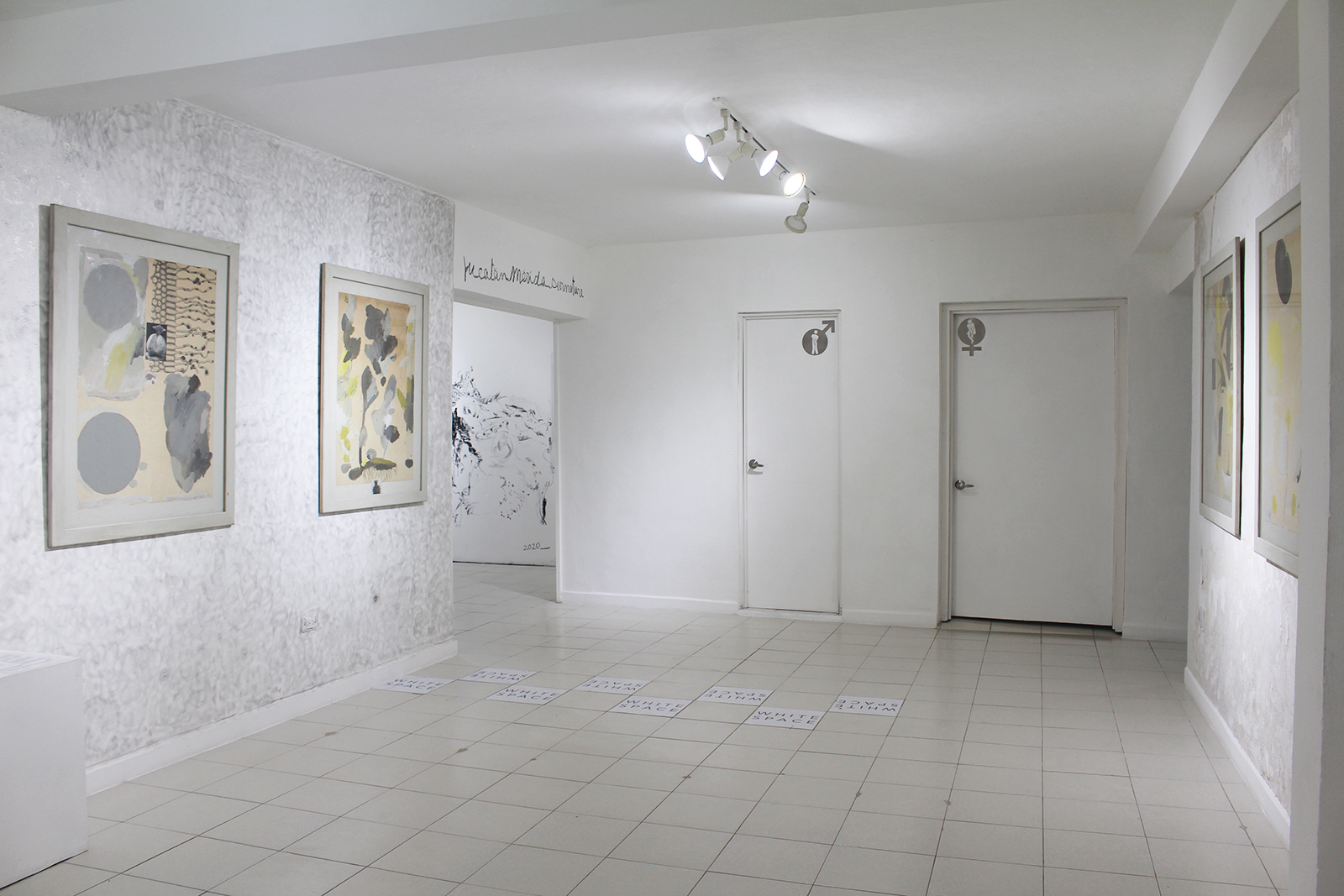Homenaje a James Brown
26.02.20 – 14.03.20
Esta colaboración está dedicada al artista norteamericano James HD Brown, quien en julio de 2018 presentaba en el Centro Cultural La Cúpula un grupo de trabajos artísticos que reunía dispersión, acuarela y collage en litografía bajo el nombre [i]Flowers of Evil I, II, III, IV, V,[/i] ([i]Flores del Demonio[/i]…). En esta propuesta el artista plasma los niveles de abstracción que existen en el trayecto de lo particular a lo general sobre un soporte que se constituye como un lenguaje en su obra. “Estas piezas están pintadas en litografías antiguas, impresas por Deyrolle al inicio del siglo XX. Tienen signos de uso y de envejecimiento, tienen vida (…).Estas litografías tienen sus propias manchas, marcas de agua y partes sucias” escribió Brown.
La mancha, que sustenta la obra, es símbolo por excelencia, como icono e imagen al mismo tiempo y en algunos casos territorio y continente a la vez. La ausencia de color en la mancha, trabajado en grises coloreados a modo de collage, sin estrías palpables, fluye y ocupa un espacio relevante de flujos. Su potencia radica en la indefinición y el riesgo auténtico de establecer un diálogo desde la “no referencia”, el extrañamiento; y hacia la imagen figurativa que promueve información.
Johanna Martín Mardones, La Jornada Maya, 31 marzo 2020
This collaboration is dedicated to the North American artist James HD Brown, whom in July 2018 presented at the La Cúpula Cultural Center a group of artistic works that brought together dispersion, watercolor and collage in lithography under the name [i] Flowers of Evil I, II, III, IV, V, [/ i] ([i] Flowers of the Demon [/ i]). In this proposal the artist portrays the levels of abstraction abstraction that exists in the distance between the particularity and the generality, on a support that is constituted as a language in his work. “These pieces are painted in old lithographs, printed by Deyrolle at the beginning of the 20th century. They have signs of use and aging, they have life (…)These lithographs have their own stains, watermarks, and dirty parts,” Brown wrote.
The stain, which sustains the work, is a quintessential symbol, as an icon and image at the same time and in some cases, territory and continent. The absence of color in the stain, as multiples shades of gray like a collage, without palpable streaks, flows and occupies a relevant space of fluxes. It’s power lies in the lack of definition and the authentic risk of establishing a dialogue from the “no reference”, the estrangement, and towards the figurative image that promotes information.
Johanna Martín Mardones, La Jornada Maya, March 31, 2020




